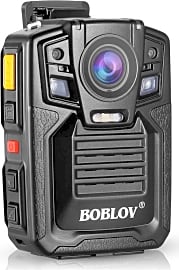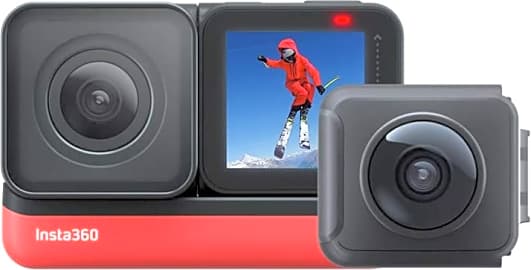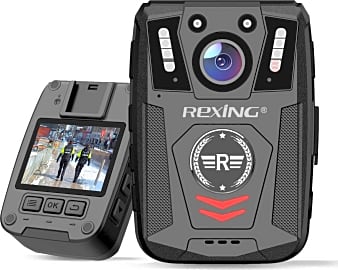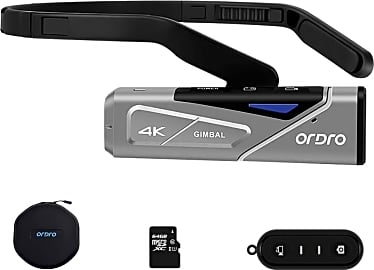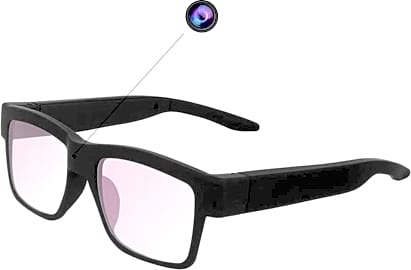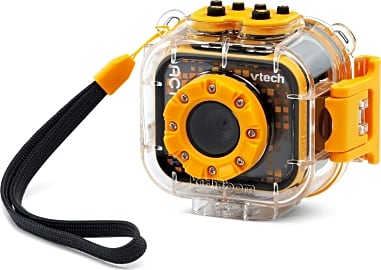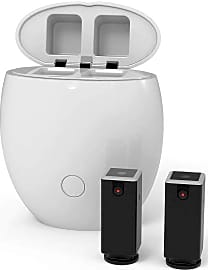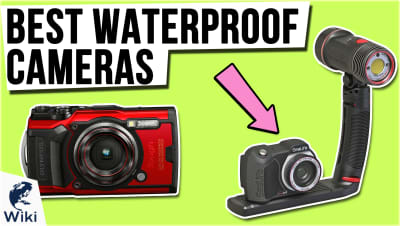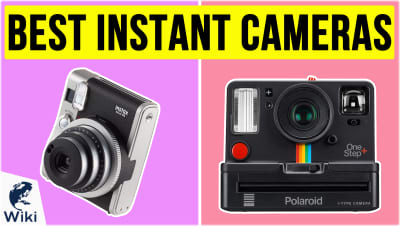The 10 Best Wearable Cameras

This wiki has been updated 38 times since it was first published in October of 2015. Capture all your outdoor adventures or record presentations and lectures (with permission, of course) using one of these high-tech, lightweight, wearable cameras. Coming in a variety of designs with mounting options to suit any purpose, many can shoot HD and UHD video and record high-quality audio, and we've ranked them here by their resolution, ergonomics, battery life, and durability. When users buy our independently chosen editorial recommendations, we may earn commissions to help fund the Wiki.
Editor's Notes
November 03, 2020:
Camera companies are constantly innovating in an attempt to outdo one another when it comes to performance specs, which means that there have been quite a few upgrades and novel releases since we last updated this list. Our previous #1 entry, the GoPro Hero8 Black, has been supplanted by the GoPro Hero9 Black, which boasts a much wider image sensor that lets it shoot 20-megapixel stills and eye-popping 5k video. It also provides a range of nifty software features, like the ability to schedule a time lapse in advance, or to retrieve footage from slightly before you tell it to start recording. We've also replaced the kid-friendly VTech Kidizoom Action Cam 180 with the new and improved VTech KidiZoom Action HD, and swapped out the Emperor Of Gadgets Headset for the Ordro EP7 based on its higher resolution and image stabilization.
The Insta360 One R Twin Edition is a particularly creative new offering, with a modular chassis that allows you to switch in different lens blocks depending on what kind of video you want to capture. Although it costs a bit more than the GoPro Hero9 Black, it's essentially two cameras in one, with the option to expand it even further by purchasing new add-ons.
We also added the Opkix One, which focuses on portability and ease of use over all else. It's not recommended for pros, since its white balance, frame rate, and other settings are locked in, but it's great for casual users looking for a bite-sized point-and-shoot option. It's also the closest thing we could find to a replacement for the intriguing but ultimately flawed Google Clips, which is being phased out by its manufacturer.
Finally, we wanted to highlight the one entry that we chose not to replace with a newer model: the Boblov Law Enforcement Worn. Though numerous competitors have hit the market in recent years, this was the only one we could locate that combined an ultra-wide-angle view, 1296p resolution, and motion activation. We did add an alternative law enforcement-style option, the Rexing P1, which includes some specialized features that make it great for public servants gathering evidence. Most notable is the ability to stamp shots with time, date, and GPS coordinates, though the password protection is useful as well.
November 25, 2019:
We wanted to make a concerted effort in this iteration of our ranking to avoid products that might be made on the cheap, and to stick as often as possible to established brand names. That's why you see the GoPro Hero8 Black and Google Clips regarded so highly. It's also why we got rid of Eyeclub Spy Watch on our old list. No only was this a poorly made piece of tech, it was also poorly conceived of for a spy camera, as it could scarcely record any useful video while strapped to your wrist, unless the user was seated completely still and held their arm at just the right angle.
Some other offerings were removed due to increases in the base resolutions that consumers have come to expect. Anything below 1080p is regarded as outdated, with the sole exception of the VTech Kidizoom Action Cam 180, as it's intended for use by children, whose standards are a little less specific.
The rise in use of body cams by police and other law enforcement officials led us to include the Boblov Law Enforcement Worn, which is a surprisingly capable option for its price point, and which could readily be employed by small towns and local officials who don't already have contracts with Taser or other big name brands in the body cam industry.
Spies Like All Of Us
The one piece of technology that the film accurately predicted would be made much smaller and more convenient was the wearable camera.
Before the internet came along with its multi-tool, the cell phone, countries needed lots of spies. They had to be skilled at almost any form of disguise, subterfuge, combat, infiltration, documentation, photography, memorization, pain tolerance, weapons manipulation, and more. Now, they just need to know code.
If you go back and watch Brian De Palma's 1996 film Mission Impossible starring Tom Cruise, the computer and cellular technology of the movie is laughably outdated. Everything is so oversized compared to today's technology, and none of it has eliminated the need for a highly skilled team of spies to do their jobs.
The one piece of technology that the film accurately predicted would be made much smaller and more convenient was the wearable camera. Throughout the movie, the team uses cameras embedded in buttons and on the frames of glasses to track and record the activities of its operatives.
They might have gone a little overboard with their tech, however, as the glasses worn in that film could never house the kind of cameras that could produce the image quality shown on screen. The physics of their lenses would prohibit it. To see the pinnacle of what wearable cameras can become, you need look no farther than this list.
The wearable cameras on this list all work on the same basic principles. They utilize as small a lens as they can get away with that can still capture as wide a field as possible without sacrificing image quality. Each unit either records to an internal flash memory device, or has a slot for removable micro SD cards, allowing you to increase the amount of footage you can hold.
Where Do You Want To Wear It?
Where on your person you wish to place your wearable camera will inform your decision among the options on our list more than any other variable. If you were planning on infiltrating a local dairy farm, for example, and chronicling horrific abuses of the animals there, you'd put yourself in direct violation of that state's ag-gag laws, so you might not want to walk up with an action cam mounted on your head.
Where on your person you wish to place your wearable camera will inform your decision among the options on our list more than any other variable.
You could, in that instance, place a lipstick camera (the nickname for any small, cylindrical recorder) in a bag or purse with a small hole cut in it. Either way, you're probably breaking those laws, so check into that before you go. You can also easily mount this type of lipstick camera on a helmet or other piece of gear for a unique perspective on a number of activities.
If you're engaged in physically demanding activities, you could benefit from the wearable cameras that lay flat against your chest and hook into or onto a piece of clothing. These tend to have the best recording times and the largest lenses, giving you hours of high-quality footage from a very relatable angle.
These are also the preferred body cams of law enforcement. Don't let all those stories of cameras "not working," or "failing to capture" fool you. Those cops either never turned their cameras on, or they turned them off before the encounter in question.
Finally, we come to the ultimate spy cameras, the sets that hide in the frames of some sweet looking sunglasses. While they work in accordance with the most exciting spy fiction in the canon, their practical application is a little sloppier, mainly because the lenses they bear are often so visible. Instead of thinking of these like killer spy tools, think of them instead as great pairs of sunglasses you can take fishing or hiking to capture the beauty of nature from a familiar angle.
Tie On Some Tech
It shouldn't surprise you that wearable technology is nothing too new. As far back as 17th-century China, some merchants and bankers wore small abacuses built into rings that they could operate with the tip of a needle. Presumably, these merchants all gave discounts to their local opticians, whom they would shortly be off to see.
Needless to say, these latter models didn't have a lot of built-in durability.
Different kinds of wearable cameras had their brief appearances in the history of photography, from a timer-based still camera that was strapped to homing pigeons in the early 1900s to the enormous VHS camcorders that some consumers simply taped to helmets before skiing downhill or jumping from airplanes. Needless to say, these latter models didn't have a lot of built-in durability.
Spy cameras, specifically designed to be as small and concealable as possible, became popular in the middle of the 20th century when Walter Zapp created the Minox subminiature camera. In the ensuing decades, television journalism used small cameras often made by technicians employed in their news organizations to catch criminals and other ne'er-do-wells in their nefarious schemes.
Advances in micro-processing and the ever-shrinking, ever-improving cameras of our modern cell phones keep pushing the wearable camera industry to greater and greater heights. It leads one to wonder what kind of book Upton Sinclair's The Jungle would have been if he'd only had a little camera hidden in his glasses.



